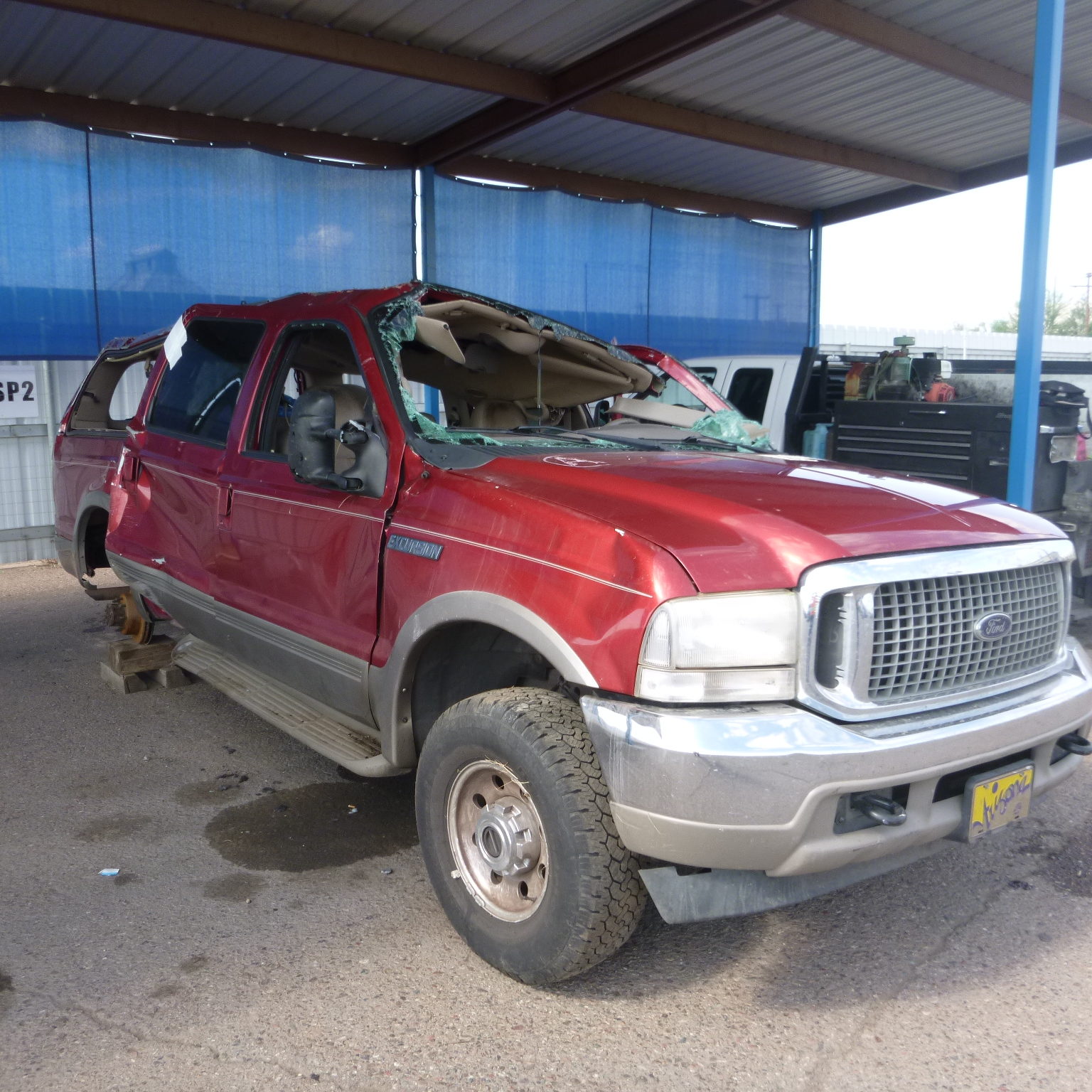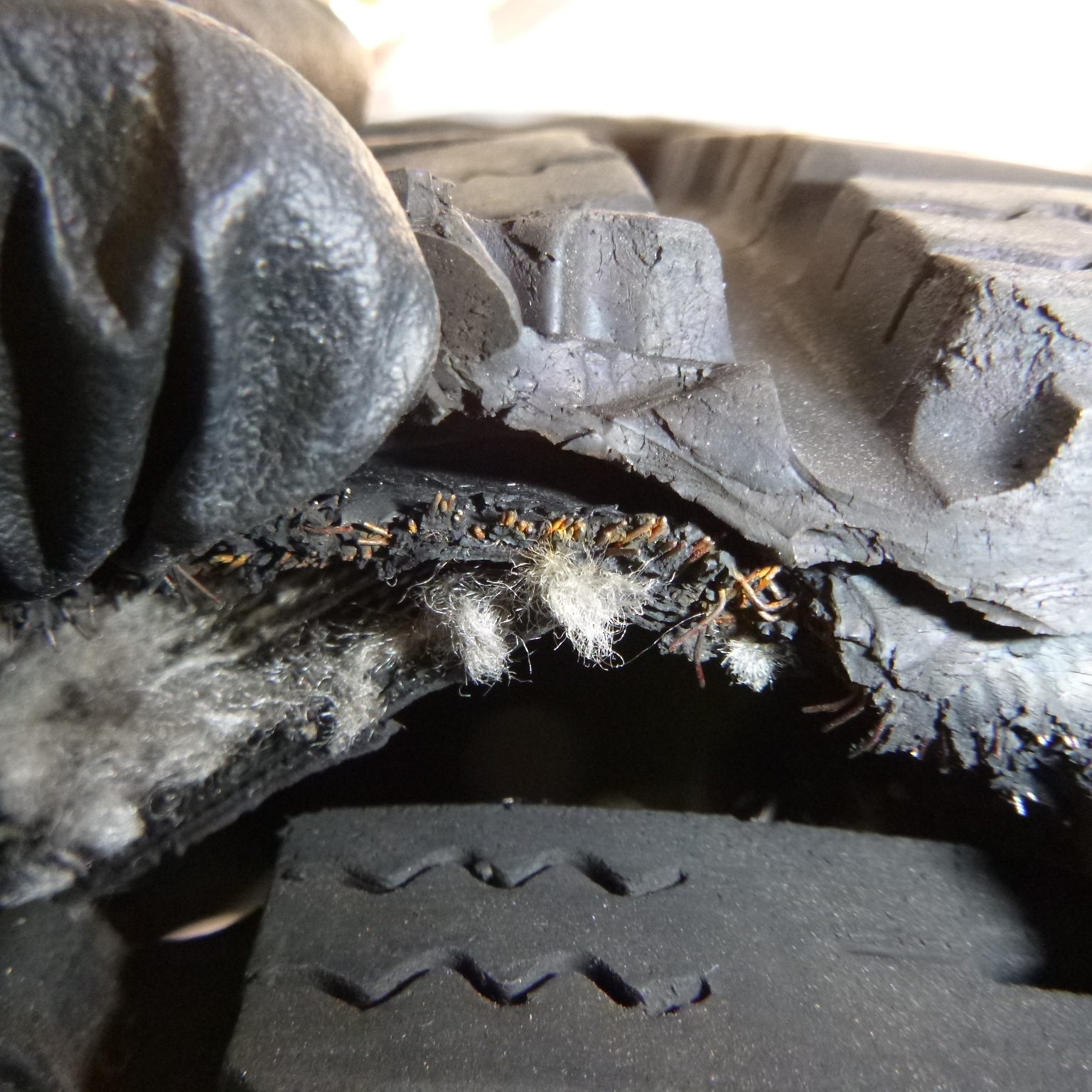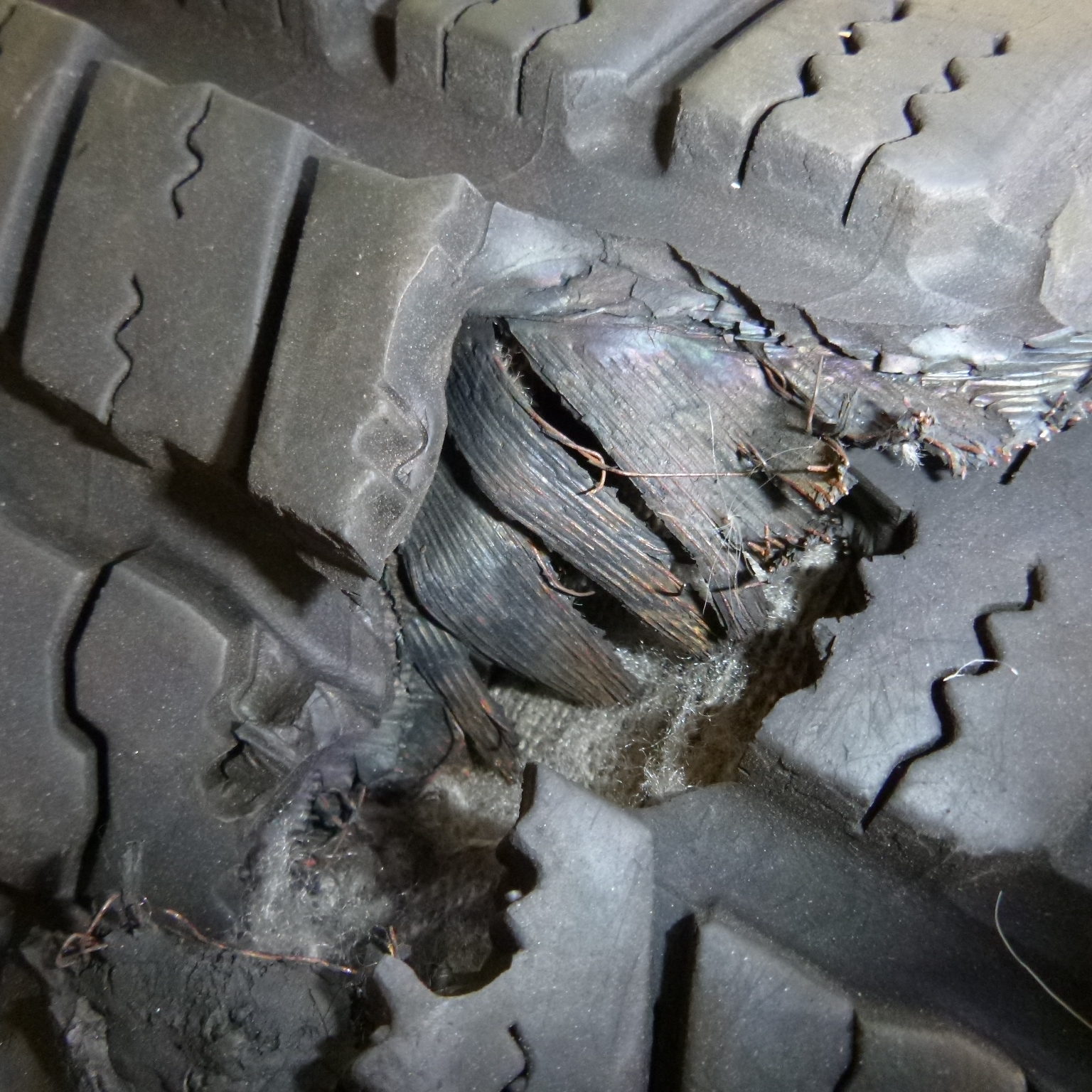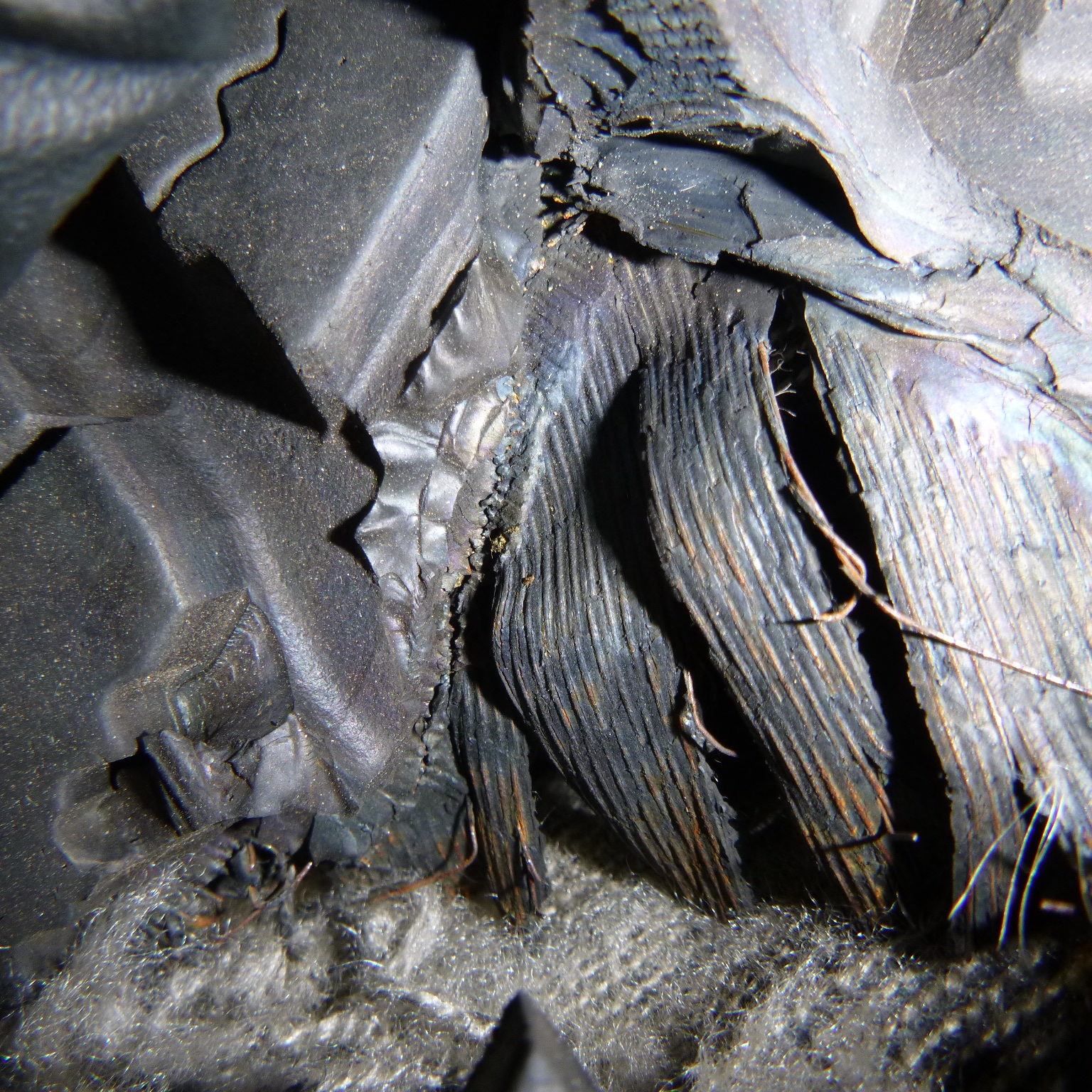NEVER TIRED WHEN IT COMES TO TIRES
As we rush headlong (as opposed to "crash head-on") into 2018, and considering all the New Year's resolutions out there regarding "spare tires" and such, we thought to kick off our Crash Bytes series with somewhat of a public service piece regarding tire safety. Specifically . . . when is it safer to replace a flat tire, rather than have it patched or plugged on your own automobile?
Many of you likely already know that a puncture in the sidewall or outer tread area of a tire should not be repaired, and any reputable tire repair facility will refuse to repair sidewall and outer tread punctures. Why? Well, they have learned from bitter (subrogation!) experience that punctures in the sidewall and outer tread areas undermine the structural integrity of the tire. No amount of repair can prevent a tire with this kind of puncture from failing catastrophically if it is returned to service on a vehicle.

But what about a puncture that happens to be right in the tread area of the tire? Can't that be patched or plugged successfully? Well . . . the answer is both yes and no!
Remember, a patch is simply a heavy-duty "band-aid" applied to the surface of the inner liner of the tire, and a plug is a pencil-shaped piece of heavy-duty rubber that is pushed through the puncture and capped against the inner liner of the tire, in order to prevent air from escaping. Both means can effectively prevent air loss, but what about the structural integrity of the tire itself?
When a tire is punctured by a nail or similar small object, the bonding between the inner layers of the tire is completely destroyed, but only in a very small area. Patching or plugging will prevent any further air loss. However, as the tire is subject to tremendous stresses and pressures in the course of normal, everyday driving, any weakness in the bond between the tire's inner layers can begin to spread outward, similar to a "run" that occurs in a nylon stocking. In addition, any water that might seep in through the outer edges of the puncture will cause the steel cords to rust, severely weakening the cords.
Most tires can run for thousands of miles after repair, even with inherent weakness caused by the original damage, and may never fail. However, some do fail . . . and the result can be catastrophic. This is why replacement, rather than repair, is the absolute safest option, in our opinion. The next best option is to only mount a repaired tire on the front of your vehicle. Why? Because failures of front tires very rarely result in a loss of control. You end up with only a lot of inconvenience (and a wish that you had sprung for a new tire)! Ahhhh . . . such is life in the fast lane.



Our 21 Day
Guarantee
In the world of claims adjusting we know that you usually have only a 30-day window in which to determine the merits of a claim. That's why we promise to handle your assignment and get the completed report into your hands within 21 calendar days.
And we back our promise with this guarantee:
If we do not get your assignment completed within 21 calendar days, then we cut your cost in half.

